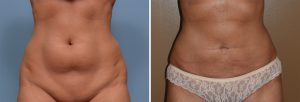
In the spirit of that liposuction concern, I would offer the following explanations.
It is anatomically difficult to penetrate through the abdominal wall with a blunt instrument. This is well known in any type of laparoscopic surgery in which a large sharp trocar is used. General surgeons well know the force that it takes to push the trocar in as part of deliberating trying to enter the abdominal cavity. This is using an instrument designed for it, aiming it at 90 degrees to the plane of the abdominal wall. Liposuction cannulas, conversely, are blunted and are used in directions oriented 10 to 20 degrees (more parallel) to the abdominal wall.
The abdominal wall is composed of three layers, an inner and outer layer of dense fascia and a thick rectus muscle between them. To penetrate the abdominal wall, it would require passing through these three layers of which the two fascial layers are quite dense. This is not that easy. This is more likely to occur in a patient who has a known or unknown hernia where a portion of the abdominal wall is absent. It is in that scenario that such liposuction injuries have probably occurred.
That is not to say that the outer fascial lining of the muscle is not often injured or torn. It is not uncommon during abdominal liposuction to have the suction cannula get clogged or obstructed. When cleared it can be seen that it is fascial strips not fat globules. This indicates that tears in the outer fascia regularly occur when doing liposuction in the deeper subcutaneous tissues. This probably accounts for why some patients will complain of spot tenderness in some liposuction areas that can take months to completely go away. These are the spots of muscle injury and not just fat.
Violation of the intra-abdominal cavity from liposuction is often lethal if untreated. While one of the reported risks of liposuction, violation into the abdominal cavity is extremely rare. In those few cases that have been reported in the medical literature, the consequences have been rapid and lethal if not treated within days. Injury of abdominal organs (e.g., bowel injury) following penetration of the abdominal cavity by a liposuction cannula can be especially life-threatening if that injury is not immediately treated. (open laparotomy and bowel repair) Even penetration into the abdominal cavity, without injury to an organ, results in peritonitis and an acute abdomen emergency within 24 to 48 hours after injury.
Dr. Barry Eppley
Indianapolis, Indiana


